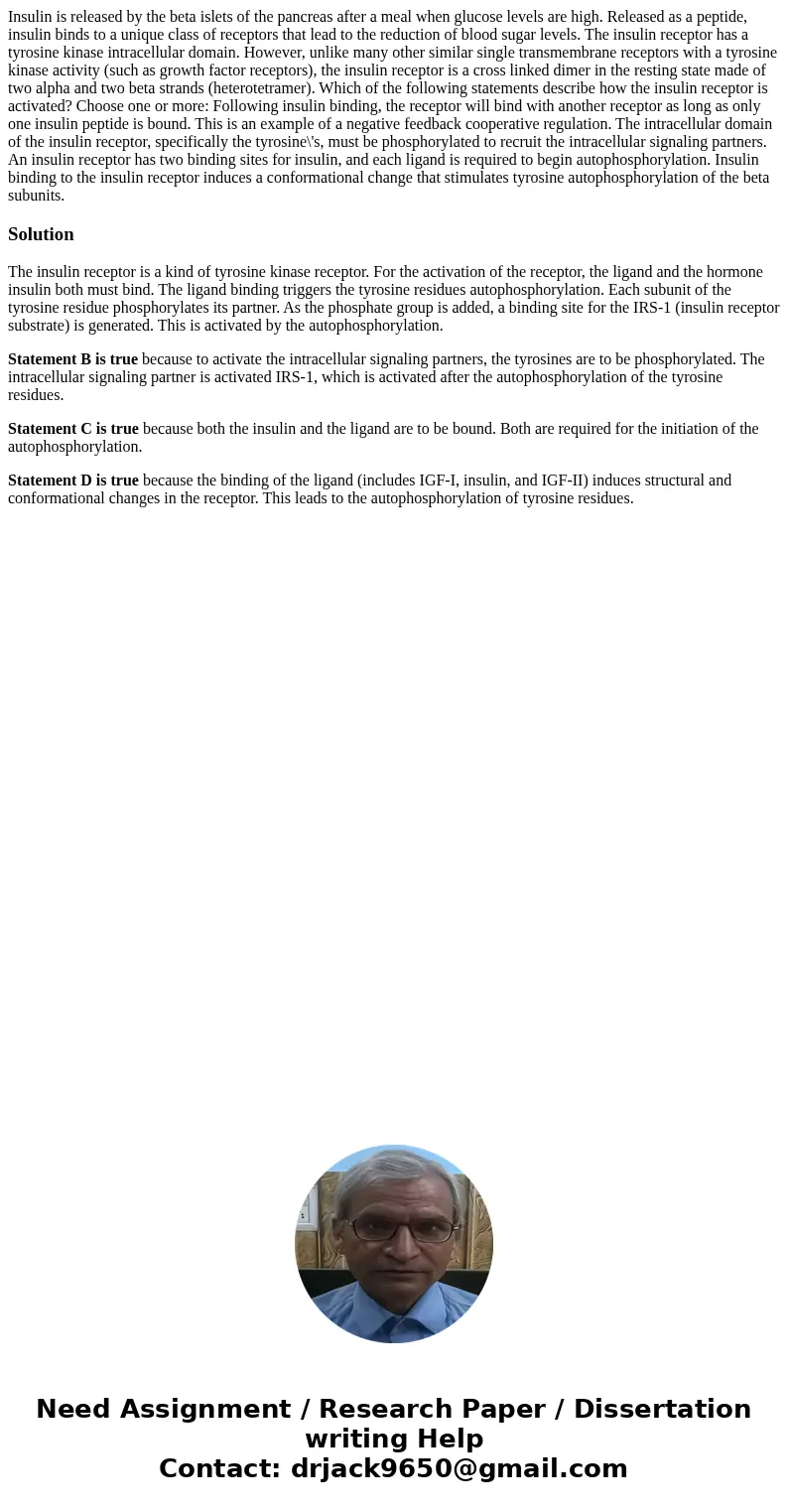Insulin is released by the beta islets of the pancreas after a meal when glucose levels are high. Released as a peptide, insulin binds to a unique class of receptors that lead to the reduction of blood sugar levels. The insulin receptor has a tyrosine kinase intracellular domain. However, unlike many other similar single transmembrane receptors with a tyrosine kinase activity (such as growth factor receptors), the insulin receptor is a cross linked dimer in the resting state made of two alpha and two beta strands (heterotetramer). Which of the following statements describe how the insulin receptor is activated? Choose one or more: Following insulin binding, the receptor will bind with another receptor as long as only one insulin peptide is bound. This is an example of a negative feedback cooperative regulation. The intracellular domain of the insulin receptor, specifically the tyrosine\'s, must be phosphorylated to recruit the intracellular signaling partners. An insulin receptor has two binding sites for insulin, and each ligand is required to begin autophosphorylation. Insulin binding to the insulin receptor induces a conformational change that stimulates tyrosine autophosphorylation of the beta subunits.
The insulin receptor is a kind of tyrosine kinase receptor. For the activation of the receptor, the ligand and the hormone insulin both must bind. The ligand binding triggers the tyrosine residues autophosphorylation. Each subunit of the tyrosine residue phosphorylates its partner. As the phosphate group is added, a binding site for the IRS-1 (insulin receptor substrate) is generated. This is activated by the autophosphorylation.
Statement B is true because to activate the intracellular signaling partners, the tyrosines are to be phosphorylated. The intracellular signaling partner is activated IRS-1, which is activated after the autophosphorylation of the tyrosine residues.
Statement C is true because both the insulin and the ligand are to be bound. Both are required for the initiation of the autophosphorylation.
Statement D is true because the binding of the ligand (includes IGF-I, insulin, and IGF-II) induces structural and conformational changes in the receptor. This leads to the autophosphorylation of tyrosine residues.

 Homework Sourse
Homework Sourse